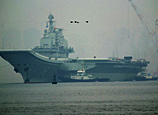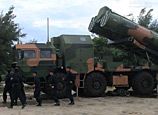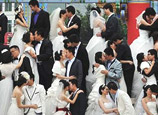
 |
| Masahiko Aoki (C) and Wu Jinglian (R) hear research reports at the 11th annual symposium of Center for Industrial Development and Environmental Governance under China’s Tsinghua University, Feb. 25, 2013. The theme of this year’s symposium is “Challenges of transforming China: Industrial development and environment management”. (Chen Jianjun/People’s Daily Online) |
A string of pollution events led by the breakout of persistent foggy weather woke up Chinese public awareness of environment protection. The chance of innovation always comes with crisis, which depends on government’s attitude and action, said renowned economist Masahiko Aoki, emeritus professor of Stanford University, board member of Center for Industrial Development and Environmental Governance (CIDEG).
Millions of migrants flow into cities in China’s rapid urbanization process. With population density growing in urban areas, people’s health will be badly affected by environmental degradation. Children in particular will be the biggest victim.
Chinese local governments have highlighted air pollution control in the future work plan as response to public concerns and experts estimated that environmental issues will be heavily weighted in the upcoming "two sessions".
Aoki pointed out that the cost of urbanization like the poor air quality will be crucial for China’s society stability. He suggested China to look to Mexico City for experience.
The second-hand vehicles imported from the United States plus basin terrain made Mexico City become home to the world's worst air pollution in the 1990s.
The serious pollution forced Mexico City to work out strict rules to scrap old cars and ensure every part of the car to meet the government’s emission standards.
The efforts paid off. Compared to 1990s, the amount of suspended particles that may lead to respiratory diseases even worse cancer has plummeted by 70 percent.
"The key to solve environmental problem is whether government take it serious enough and turn ideas into real actions," Aoki commented, "The price is high but the reward may be the chance of innovation. What government should do is to set up tough hazard control system and create enterprise competition favored environment."
Japan’s automakers were the best example of transforming crisis into chance. Half a century ago, the Japanese public uttered strong voice of requesting less environmental hazards and many anti-hazard acts were put into practice.
Japan’s automakers invested heavily in decreasing hazardous emission and then met the requirements of Muskie Act, a U.S. law with the world’s strictest standards on automobile exhaust at that time. The breakthrough gained on environment protection largely improved the performance of Japanese cars and pushed Japan’s automakers to be industrial leader.
















 Beijing Film Academy releases list of re-examination
Beijing Film Academy releases list of re-examination


![]()
